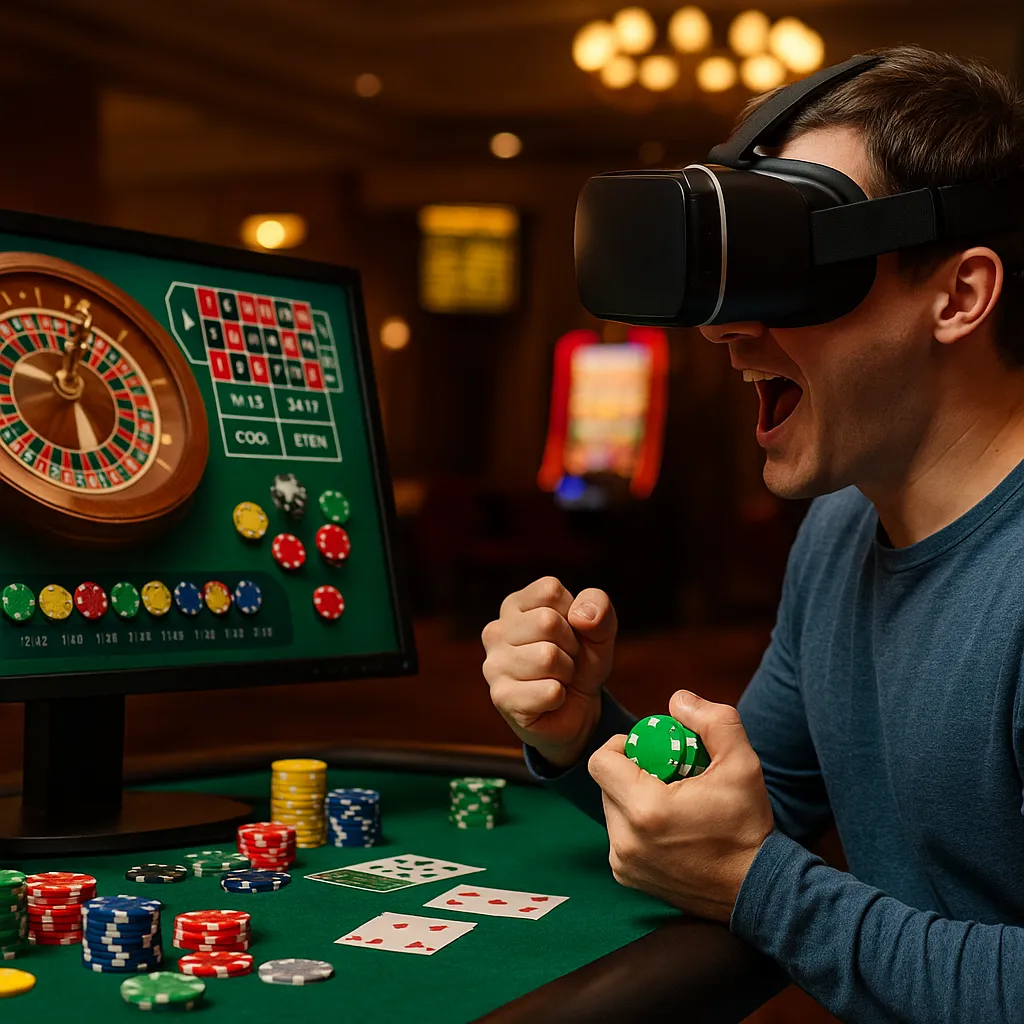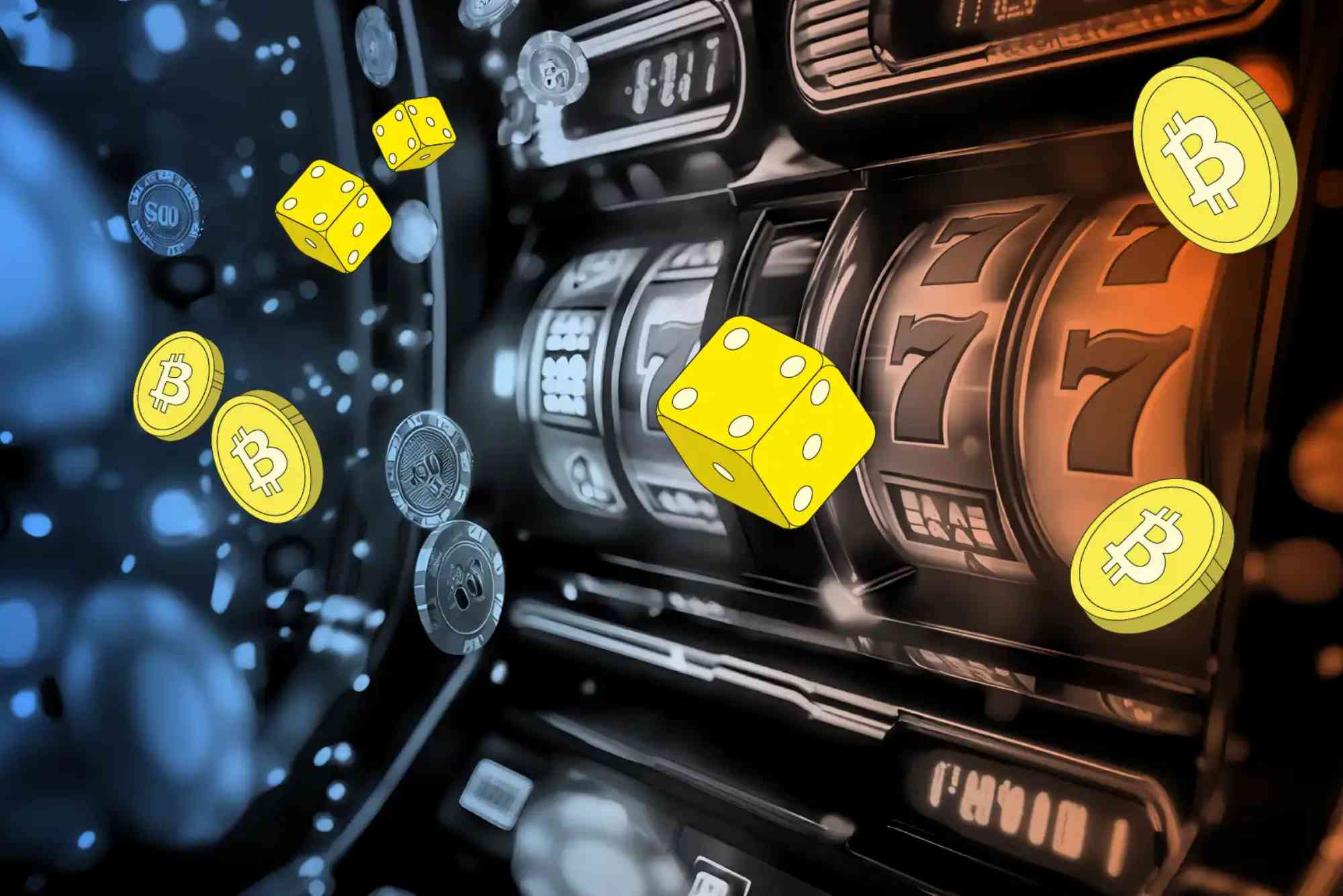Over the past decade, the intersection between gaming and technology has reached new heights. Once limited to 2D browser windows and basic mobile apps, online casinos now harness advanced software to simulate authentic casino floors. Most notable among these leaps is virtual reality (VR) gaming. While many players are accustomed to spinning a digital roulette wheel on a desktop, VR technology transports them into fully immersive casino environments. With a headset on your face and motion controllers in hand, you no longer “see” a game—you’re inside it. As someone who’s spent hundreds of hours exploring casino floors both virtually and in real life, I can attest that VR does more than add a novelty factor. It fundamentally changes how we engage with games, interact with dealers, and even place bets.
The Rise of VR in the Casino Industry
Ever since VR headsets gained traction in consumer markets around 2016, industries from real estate to healthcare have experimented with immersive experiences. Casinos, of course, were quick to join. At first, investment was cautious. Pioneers like PokerStars and Microgaming rolled out small VR poker rooms where avatars represented players at virtual tables. The concept of wandering a lobby and chatting with a live dealer felt futuristic, almost like something out of a sci-fi movie.
By 2020, however, larger developers recognized the technology’s potential. With more powerful headsets like the Oculus Quest series and SteamVR-compatible rigs on the market, the barriers to entry dropped. Suddenly, anyone with a gaming PC or standalone headset could step into virtual casinos. Evolution Gaming, a leading live dealer provider, introduced dedicated VR studios. These studios duplicated every detail of a physical casino—from the ornate chandeliers to the subtle hum of background chatter. If you’d never been to a real casino, VR felt just as authentic. If you had, you saw it all come to life again.
There is another layer to consider: regulatory flexibility. Players frustrated by self-exclusion measures like GamStop sought alternative platforms. One could read about “betting sites not on GamStop” and find a broader selection of games, albeit with varying licenses and protections. For these users, VR casinos offered a compelling escape—an immersive environment not restricted to local gambling regulations. But as with any innovation, this also raised concerns about responsible gaming and oversight. Regardless, the fact remains that VR’s entrance into the online casino realm was not merely about glitzy visuals; it addressed a market demand for deeper engagement, tailored experiences, and, in some cases, fewer imposed restrictions on play.
How VR Transforms Gameplay Mechanics
At its core, VR reshapes not just how a game looks, but how it feels. In a conventional online blackjack or slot machine, you click buttons to place bets and watch animations replay. The interface is flat, organized by menus and pop-up windows. In VR, however, everything becomes spatial. Your chips must be “picked up” by reaching out with a motion controller. You place them on a felt green table with a deliberate gesture. When the dealer shuffles cards, you can see every slate metallic chip clinking together. That attention to tactile detail might seem trivial, but it triggers our brains differently. Instead of absorbing information through a screen, you process it as if you were physically present.
Card games benefit massively from this shift. I remember booting up a VR poker lobby where each avatar reflected a player’s real-time head movements and hand gestures. When someone leaned forward to study the flop, you noticed the subtle shift in posture. When they turned their head to greet a newcomer, you felt as if they were right beside you. Even blind tells—like a sudden jerk of an avatar’s upper body—feel amplified. The psychological aspect of poker gains new urgency, because players aren’t web icons, they’re digital representations with lifelike micro-movements.
Roulette and craps also evolve in VR. In 2D versions, the thrill of the ball bouncing on red or black is a contained animation. In VR, I’ve experienced nights where I walked around a crowded table, watching as the croupier spun the wheel by hand. When the ball drops, the clicking sound reverberates off the ornate column structures overhead. Watching it weave between pockets, I felt a surge of excitement I simply hadn’t felt staring at a laptop screen. For craps, you traditionally clicked to roll dice. In VR, you lift your arm, glance at your hands, and throw the dice with a realistic flick of the wrist, feeling the slight haptic vibration as they bounce.
Slots, too, achieve fresh appeal. Far from static reels rotating in place, VR slot games are frequently set in elaborate 3D worlds. I once played a pirate-themed slot where my seat floated on a wooden plank, waves lapping below. The reels hung above me like physical cylinders, and symbols emerged in vivid relief whenever I hit a winning combination. It felt more like operating a physical slot machine at a themed casino than pressing keys on my keyboard. Even though the mathematical design doesn’t change—random number generators still determine outcomes—the experience feels more visceral. That immersiveness can deepen player attention and lengthen sessions.
The Social and Psychological Impact
Beyond mechanics, VR revolutionizes social interaction within casinos. Traditional live dealer tables already bridge the online-offline gap by streaming real dealers via video. But VR enhances that immersion by reconstructing a networked environment where players and dealers coexist in real time as avatars. When I enter a VR casino room, I see dozens of hand-animated figures in tailored suits and gowns, each representing a unique player connection thousands of miles away. We exchange virtual chips, toss friendly glances, and sometimes chat via voice.
This sense of presence fosters camaraderie. If you’re playing baccarat on your own computer, you might feel isolated. In VR, you’re part of a community. I once found myself lingering at a virtual blackjack table to chat about a dealer’s surprisingly quick card cuts. The dealer responded in real time—smiling, acknowledging my avatar—and someone else at the table cracked a joke about always hitting 21 on Tuesdays. That spontaneous banter replicates the lighthearted trash talk you’d get at a brick-and-mortar casino.
However, alongside that social uplift come psychological considerations. VR’s hyper-realism can intensify emotional responses. Winning a large pot at a poker table felt euphoric in VR, yet losing stung more than it ever did on my desktop. Your senses trick you into believing you’re physically gambling, complete with the dopamine rush and heart-rate spikes. For players prone to problem gambling, VR’s proximity to a real-world casino environment may exacerbate risks. The ease of access—no dress code, no travel—combined with the sensory surge can blur separations between reality and simulation. Regulators and responsible gaming advocates must acknowledge VR’s potential to both engage and endanger.
Technological Challenges and Trends
Despite VR’s promise, its implementation in online casinos faces hurdles. High development costs are a primary barrier. Building a fully realized 3D environment with photorealistic textures, accurate physics, and multiplayer networking requires considerable resources. Smaller operators often struggle to match the scale of developers like Playtech or Evolution, which possess the budgets to create expansive VR casinos. That disparity restricts the range of VR options available to players, concentrating innovation among a handful of major studios.
Hardware concerns also slow adoption. Although VR headsets have decreased in price—Oculus Quest 2 retails under $300—many users still require powerful gaming PCs for graphically intensive titles. Not everyone owns or is willing to invest in these devices. Additionally, VR’s learning curve can deter casual gamblers. Putting on a headset, mastering hand gestures for placing bets, and navigating virtual spaces all present initial friction. Some players prefer the simplicity of tapping a mouse or swiping on a touchscreen.
Another challenge lies in network latency and server infrastructure. In traditional online casinos, a small delay often goes unnoticed. In VR, lag can break immersion. If your avatar’s chip doesn’t land in the right spot when you “flick” it, the illusion shatters. Developers must ensure robust servers and optimized code to deliver smooth, synchronized experiences across continents. That’s why many VR casinos initially launched in markets with strong broadband penetration—Europe, North America, and parts of Asia—while emerging regions await better connectivity.
Looking forward, cross-platform compatibility is a hot topic. Some developers are experimenting with mixed reality, letting desktop and VR players inhabit the same rooms. Imagine sliding from a laptop screen into a friend’s VR headset view seamlessly. Such cross-play can boost lobby populations, making tables feel more dynamic instead of sparsely populated VR-only environments. Cloud gaming may also democratize access. With game-streaming services leveraging GPUs in remote data centers, players could load VR casinos on lightweight devices—VR-enabled tablets, even portable headsets—without needing top-tier local hardware.
Real-World Examples and Developer Approaches
Several providers have pioneered VR casino experiences:
Playtech’s “Gladiator Village” replicates a Roman colosseum-themed casino where players gather at VR baccarat stations. Its developers focused on historical accuracy, from polished marble flooring to flickering torches on stone walls. I remember logging in for the first time and gawking at how a single torch’s light flickered realistically across the floor. That attention to detail brings authenticity.
Evolution Gaming launched its “VR Casino” in partnership with Valve. They recreated a luxury casino penthouse with floor-to-ceiling windows overlooking a neon-lit city skyline. Dealers appear as high-fidelity avatars, and players navigate the space by teleporting across glowing tiles on the floor. Although teleportation isn’t as intuitive as physically walking, it avoids motion sickness, which can be a real issue in VR. When I tested it last year, turning my head to scan the room felt natural—no controller menus breaking the flow.
Betable focused on casual VR games: their offerings include virtual slot tournaments where players gather in stadium-like arenas, cheering as the reels spin. Watching others win on a massive shared screen adds a communal vibe, reminiscent of sports bar wagering. One memorable night, a jackpot hit, and nearby avatars projected confetti in synchronized celebration. That event felt more energetic than scrolling through a leaderboard on a website.
Although these examples illustrate success, not every VR casino has thrived. Sparse lobbies and slow user adoption remain stumbling blocks. In 2019, Immersive Play launched a VR poker suite that attracted initial buzz but gradually saw declining active users. Some players complained about clunky movement controls or the time required to load into rooms. Smaller studios have since refocused on augmented reality (AR) overlays—bringing casino games into physical spaces via smartphone cameras—triaging VR’s complexity for lighter mixed-reality experiences.
The Future: Beyond Gambling as We Know It
VR’s influence extends beyond duplicating brick-and-mortar casinos online. Developers are exploring next-generation concepts that reshape gambling entirely. Consider fully interactive heist-themed slot adventures: rather than pulling a lever, you slip on VR gloves, pick a lock, and navigate laser grids to reach a digital vault. The “slot” emerges as a narrative payoff rather than a spinning reel. The lines between video game and online casino blur. As someone who’s beta-tested early versions of such games, I found the experience mesmerizing—almost like a AAA video game with a built-in jackpot component.
Another trend: geolocation-based VR casinos. Imagine donning a VR headset at home but logging into a replica of the casino you frequent in Las Vegas. The layout, décor, and even the dealer uniforms mirror reality to a tee. If I could explore my favorite Golden Nugget casino virtually while traveling overseas, I’d feel a stronger connection than any 2D live stream. Developers are partnering with real-world casino chains to capture 3D scans of their floors, tables, and lounge areas. This convergence promises unprecedented brand loyalty and marketing synergy.
Beyond gameplay, VR’s analytics potential is remarkable. Traditional online casinos track clicks, scrolls, and bet amounts. In VR, you also measure gaze direction—where each player looks, how long they study a payout chart, or whether they glance nervously at other players. Haptic feedback can register pressure patterns, revealing player confidence or hesitancy. These metrics empower operators to refine game design, adjust dealer animations, or tailor bonus offers based on nuanced behavioral patterns.
However, all these advances heighten responsibility. As VR grows more lifelike, regulators must adapt. Ensuring fair play in a 3D environment requires advanced monitoring—verifying that random number generators remain unaltered when integrated into VR engines. Protecting minors and enforcing self-exclusion also becomes more complex. If someone can simply slip on a headset and launch a VR casino from their living room, enforcing geoblocking and check-cash thresholds demands new technical safeguards.
Practical Considerations for Players
For those curious about diving into VR casinos, I recommend starting with clear goals. If you’re primarily a casual slots player, find platforms offering light VR experiences on standalone headsets. Oculus Quest 2, for example, supports basic VR casino apps with minimal setup. You’ll need to download from the Quest store, create an account, and undergo standard identity verification like any other online casino.
If your goal is high-roller blackjack or live dealer poker, invest in a VR-ready PC with a tethered headset like Valve Index or HTC Vive Pro. Expect a steeper hardware and cost commitment: a mid-tier GPU, a fast processor, and stable broadband are required to avoid lag. Once set up, choose reputable providers that hold legitimate gaming licenses—Malta Gaming Authority, UK Gambling Commission, or Isle of Man. Don’t be lured solely by flashy graphics; verify that the platform undergoes regular audits by independent agencies like eCOGRA.
It’s also crucial to balance immersion with safe play. Set time limits to avoid spending extended sessions in VR—physical fatigue and eye strain can creep up unnoticed. Use the built-in comfort settings: most headsets allow vignette modes that reduce motion sickness. Keep your play area clear to prevent accidents if you move around. And above all, track your spending. While the 3D environment may make you feel like you’re at a crowded casino, the credits you wager remain virtual. Regularly review your bankroll and set deposit limits to maintain control.
VR’s Ripple Effect Across the Industry
While VR adoption among players may still be nascent, its influence on the broader casino industry is undeniable. Brick-and-mortar establishments view VR as both a competitor and collaborator. Many large casino resorts now feature VR lounges where guests can try virtual slots or VR-based table games before hitting the physical floors. These lounges act as recruitment funnels—players enthused by an immersive preview may be more inclined to visit in person.
Meanwhile, marketing strategies evolve. Advertisers create VR trailers showcasing new game launches, allowing potential customers to step into a fully realized critique chamber. Imagine donning a headset at home to preview a forthcoming live dealer tournament—instead of watching a video ad, you experience seats adapting around you, live dealer interactions, and special ambiance lighting. That level of engagement fosters brand loyalty well before official game launches.
Technology vendors benefit too. Hardware manufacturers report that partnerships with gaming studios accelerate VR hardware sales. If a popular casino title is VR-exclusive, players must purchase headsets to join. Such symbiotic relationships spur rapid innovation: headsets become lighter, controllers more precise, tracking more reliable—all driven by gaming’s technical demands.
Conclusion
Virtual reality is not a fleeting novelty in the online casino realm. It represents a paradigm shift that redefines how we perceive gambling entertainment. From the tactile thrill of dealing cards in an opulent virtual ballroom to the social interplay of voice chat and avatar gestures, VR heightens every aspect of gameplay. While early adoption hurdles—hardware costs, network demands, and responsible gaming concerns—still exist, the technology’s momentum is undeniable.
Developers continue to experiment, blending narrative-driven scenarios, hyper-realistic visuals, and advanced analytics to craft holistic experiences. As VR headsets become more accessible, and cloud-based streaming lowers barriers, expect broader adoption among casual and serious gamblers alike. For players curious about exploring new environments and deepening immersion, VR offers a persuasive alternative to traditional online casinos. Just remember to research platforms carefully, set clear boundaries for time and spending, and embrace VR’s potential without letting the sensory realism eclipse rational play.
Whether you’re a seasoned high-roller or a curious newcomer, VR’s impact on online casino games is something you can’t ignore. In the coming years, I anticipate VR casinos will no longer be novelties but mainstream venues, enticing millions to enjoy the best of both virtual and real-world gambling. Until then, strap on a headset, gather your chips, and prepare to step into a casino like never before.









